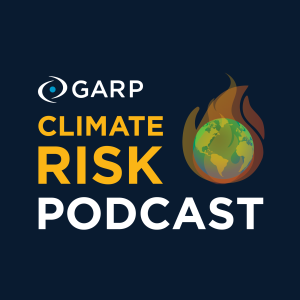
Hear from Bob Buhr of the Imperial College Business School, as we explore ways of organizing the risks from climate change.
A risk taxonomy is a key underpinning of enterprise risk management. Used by firms to create a common risk language, it underpins a range of activities, such as risk identification, risk appetite setting and risk horizon scanning. But when it comes to the risks arising from climate change, there has been a bit of a vacuum. Some firms have chosen to use ‘green’ taxonomies. But these were set up for a different purpose – that is to classify the sectoral investment opportunities from the transition to a net zero or ‘green’ economy.
That’s why in today’s episode, we’ll be looking at how firms can overcome this gap, by examining a taxonomy that has been set up specifically to classify potential firm-specific climate risks. We’ll explore:
- The challenges facing firms from a lack of suitable risk taxonomies;
- What the key categories within a climate risk taxonomy ought to be; and
- Why and how biodiversity loss and natural capital risks should be incorporated.
To find out more about the Sustainability and Climate Risk (SCR®) Certificate, follow this link: https://www.garp.org/scr
For more information on climate risk, visit GARP’s Global Sustainability and Climate Risk Resource Center: https://www.garp.org/sustainability-climate
If you have any questions, thoughts, or feedback regarding this podcast series, we would love to hear from you at: climateriskpodcast@garp.com Links from today’s discussion:
- Bob’s latest book, “Climate Risks: An Investor's Field Guide to Identification and Assessment” - https://www.wiley.com/en-gb/Climate+Risks%3A+An+Investor%27s+Field+Guide+to+Identification+and+Assessment-p-9781394187355
- Eila Kreivi on the GARP Climate Risk Podcast – https://www.garp.org/podcast/eu-taxonomy-sustainable-finances-cr-220616
- UNEP FI’s annual climate adaptation gap reports – https://www.unep.org/resources/adaptation-gap-report-2022
- Jo Handelsman on the GARP Climate Risk Podcast – https://www.garp.org/podcast/soil-crisis-opportunity-cr-041323
- McKinsey’s report on natural capital - https://www.mckinsey.com/capabilities/sustainability/our-insights/nature-in-the-balance-what-companies-can-do-to-restore-natural-capital
Bob Buhr, Honorary Research Fellow, Centre for Climate Finance and Investment, Imperial College Business School
Over a 30-year career, Bob has worked at major rating agencies, asset managers, hedge funds and banks, and was often cited as a top-ranked bond analyst in various investor polls. He has published ESG and climate-related reports and written on environmental risks for years and has engaged with a variety of NGOs on climate and natural capital-related issues. He is the author of Climate Risks: An Investor's Field Guide to Identification and Assessment. Bob holds a bachelor’s degree from Ithaca College, and a Ph.D. from Brown University.
More Episodes
 2023-01-19
2023-01-19
 2022-12-01
2022-12-01
 2022-10-20
2022-10-20
Create your
podcast in
minutes
- Full-featured podcast site
- Unlimited storage and bandwidth
- Comprehensive podcast stats
- Distribute to Apple Podcasts, Spotify, and more
- Make money with your podcast
It is Free
- Privacy Policy
- Cookie Policy
- Terms of Use
- Consent Preferences
- Copyright © 2015-2024 Podbean.com






